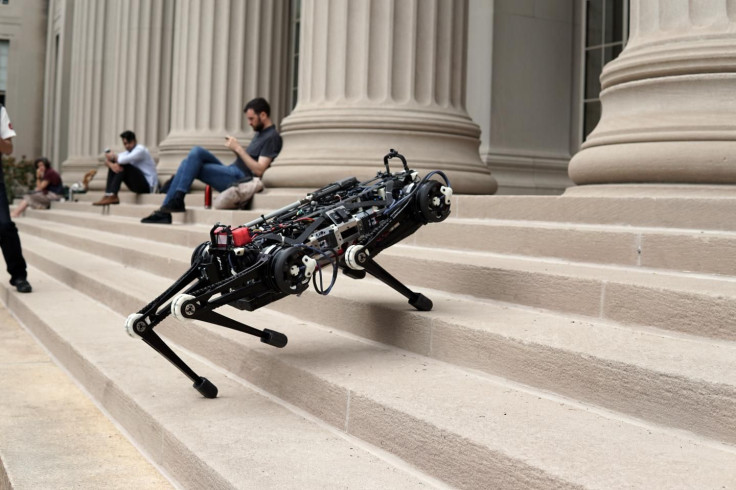Watch: MIT’s Cheetah Robot Can Run, Jump, Climb Stairs Without Seeing Obstacles

MIT has released a new video showcasing the upgraded version of its famous Cheetah robot — a four-legged machine that is just as big as a full-grown Labrador and can perform a range of dexterous tasks without seeing a single thing in its proximity.
These days, it is not a big surprise to see a robot jump or run across a rough terrain. Boston Dynamics SpotMini robot-dog is the best example of this case. But, most machines in this category, including the adorable dog, rely on cameras and a range of visual sensors to detect their surroundings, dodge obstacles, and find their way around.
This could be a problem in scenarios where the conditions are dark or if a particular obstacle is missed by the system.
“Vision can be noisy, slightly inaccurate, and sometimes not available, and if you rely too much on vision, your robot has to be very accurate in position and eventually will be slow,” Sangbae Kim, associate professor of mechanical engineering at MIT, said in a statement.
So, Kim and colleagues at MIT decided to rely on tactile feedback and developed Cheetah 3, which employs a pair of algorithms to determine its position in a given space and move around swiftly, without losing its way or balance. The whole process, as they described, is pretty similar to how a person finds his way in a pitch black room while using his surroundings.
In the clip, the Cheetah 3 can be seen using the algorithms simultaneously to race on a treadmill and climb stairs littered with wooden blocks, tape, and other obstacles.
The first algorithm, called contact detection, determines extra accelerometers, gyroscopes, and leg joint positions to determine when to complete a step. If the machine steps on a light twig, the algorithm will use sensor data and varying leg joint position to determine the robot’s next move. As this happens, the second algorithm determines where it is in a given space, allowing it to recover and move ahead quickly.
“It doesn’t know the height of each step and doesn’t know there are obstacles on the stairs, but it just plows through without losing its balance,” Kim added in the statement.
Due to these capabilities, the Cheetah can wiggle, pronk, and recover to its original position when pushed around. It can even invert its knee joints, which enables turning around without actually all the way around.
The team hopes further developments could enable Cheetah to carry out blinding tasks that humans or visually-capable machines cannot do such as inspecting a power plant or dangerous rescue missions.
“I think there are countless occasions where we [would] want to send robots to do simple tasks instead of humans,” the researcher concluded. “Dangerous, dirty, and difficult work can be done much more safely through remotely controlled robots.”
© Copyright IBTimes 2025. All rights reserved.




















